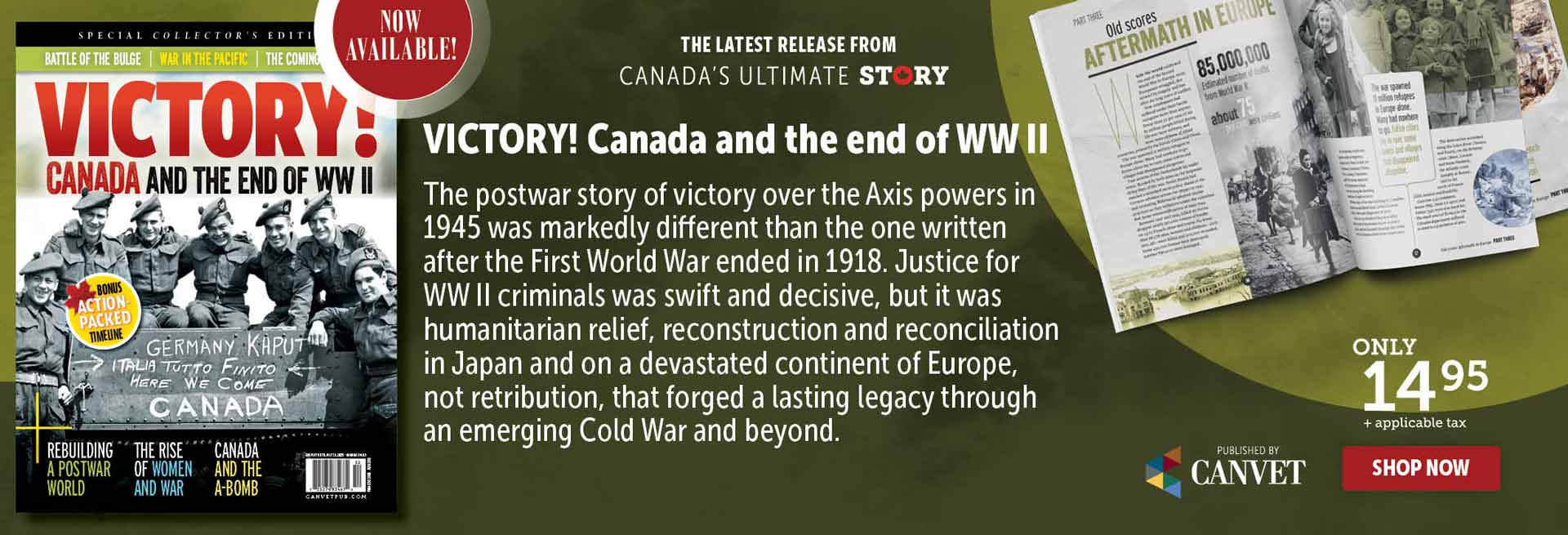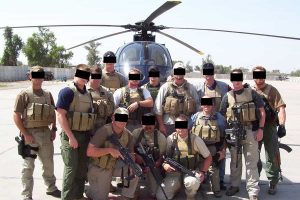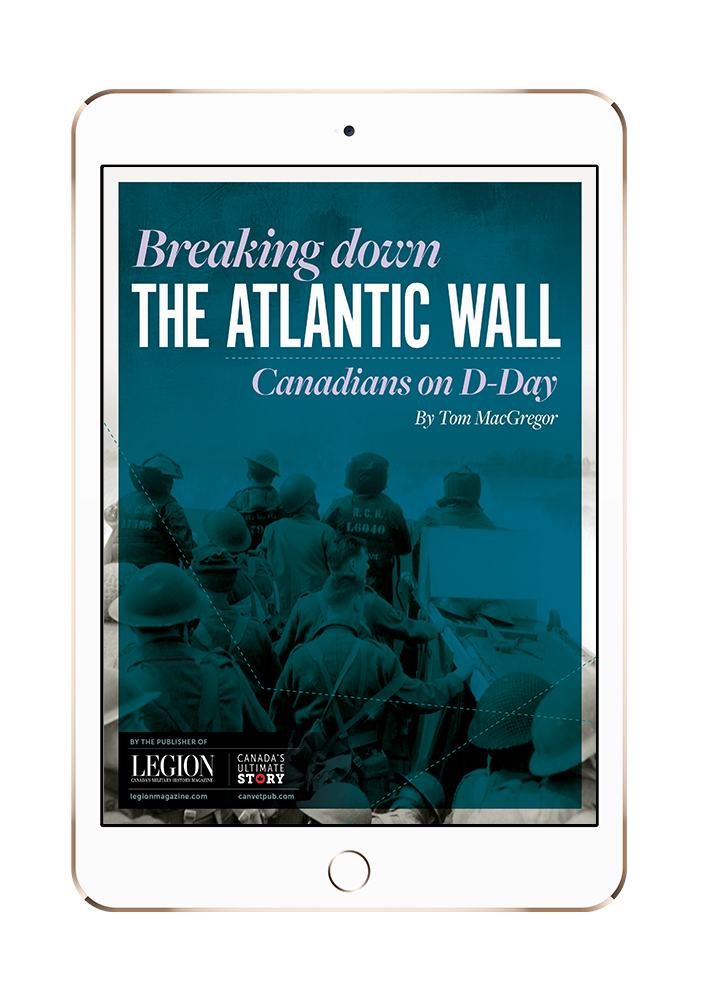by Mac Johnston
 |
| Many rural homes and buildings in the Livno Valley were destroyed during the 1995 Croat offensive. |
To our right, the land drops away to a flat valley; to our left, the land rises rapidly to form hills which grow into a small mountain range as our Grizzly armoured personnel carrier proceeds from Glamoc to Livno on patrol route Charlie 4 through the Livno Valley. On both sides of the road, the majority of stone homes and farm buildings are destroyed.
I am on patrol with B Battery, 1st Regiment, Royal Canadian Horse Artillery from Canadian Forces Base Shilo, Man., currently operating out of Tomislavgrad in Bosnia-Herzegovina. The destruction was part of the Bosnian Croat offensive at the end of the Bosnian war of 1991-95, says Warrant Officer Carl Roehl.
“On the other side of the valley was the forming-up point for the Croats,” the D Troop leader explains. “They sent an advance element forward to warn everyone they were coming through. They gave them 24 hours to clear out and everybody left. It was a predominately Serb area and there were Muslims here too. They just burned the homes. The homes that still have the roofs on and weren’t shot up were Croat homes. It was wanton destruction.”
The Croat destruction of homes was not necessary militarily. It was a deliberate attempt to depopulate the area of other ethnic groups. It appears to have worked. Five years later, few residents have returned.
Today the Livno Valley, about 40 kilometres long and up to three kilometres wide, is reputed to be the biggest minefield in Bosnia. There are thought to be 1.5 million mines in known mined areas in Bosnia and 10 million mines in all, covering about two-thirds of the country. Plastic tape, sticks and paint are used to mark off mines that have been identified, but it’s been six years after they were laid, so most have been covered by dirt and vegetation. Most of the mines have a killing radius of 50 metres or more and they are a legacy that will have an impact for generations.
The ongoing process of removing mines will take forever. In the meantime, NATO takes precautions. When driving or walking, you are not allowed to venture off the pavement or the hard pack of rural roads. You’re not even supposed to pull over on the shoulder to let an oncoming vehicle pass. In fact, our APC driver’s refusal to budge forced a local in a small car to back up roughly one kilometre to reach a safe place where he could pull off into a driveway.
These brutal realities help to explain the current situation in Bosnia. The enemy armies are in their respective camps under the direction of the NATO Stabilization Force. There is no threat at the moment, but peace remains an illusion. Hatred abounds between the three main groups–the Bosnian Croats, the Bosnian Serbs and the Bosniacs, formerly known as the Bosnian Muslims.
The Canadian soldiers realize that all the Bosnian groups would prefer that NATO leave so they can settle their own differences. This would virtually guarantee a return to the ethnic cleansing that characterized the 1991-95 conflict. The Serbs were roundly and rightly condemned by Western nations, but all sides committed atrocities.
There are other challenges. Lieutenant Scott Setchell of Shilo commands the 39-person RCHA detachment that was established in the town of Glamoc last summer after three local cafes, each of a different ethnicity, were bombed within two months. He says the bombings could have been “ethnically driven, mafia driven or economically driven.” Several months before that, NATO had raided a local warehouse and recovered three million Deutschmarks–approximately $2.1 million Cdn.–of humanitarian aid that had been taken from the system.
“There has been a lot of corruption at the municipal level, a lot of problems,” Setchell says. “The mayor was removed (by NATO) just two months ago…. The fellows around here, it’s a little circle. They work at the municipal level and the canton level. They’re millionaires times over…. That’s why there hasn’t been much international aid come to this area.”
The population of the area dropped to 3,000 from 13,000 during the ethnic migration of the war and as a result Bosnian Croats have replaced Bosnian Serbs as the majority. “The Serbs left when the tide turned against them and they destroyed many houses on their way out so the Croats wouldn’t benefit,” Setchell says.
There’s limited resettlement here. “There really isn’t much for people to come back to this area for,” Setchell says. “For the younger generation, it’s much like the urban versus rural thing. Once the young people experience city life, they prefer it to going without electricity and running water.
“There’s no employment here except for the lumberyard and (15) cafes. This was a socialist/communist country for 50 years so people aren’t able yet to function in a democratic economy. They are heavily dependent on state aid or foreign aid.”
Securing a safe and stable environment is the top priority. “We do mounted patrols (in armoured personnel carriers), dismounted patrols (on foot) and standing patrols,” explains Master Bombardier Jason Power of Torbay, Nfld. “Most of it is just observing what the locals are doing and what their attitude is towards us.”
Serbo-Croat is the official language and each patrol has a translator along. Patrols often encounter local residents seeking assistance. They identify the individuals and the type of help needed. In late November, the troop was about to launch a 10-day blitz to distribute humanitarian aid: winter jackets, shoes, boots, plastic, wood stoves and some non-perishable food.
“We all want to do it as much as we can but the problem is that sometimes we get wrapped up in it and may get away from the primary aim,” Lieutenant Setchell says. “For us it’s the safe and secure environment, especially after the bombings in the summer. We do see more people in the town centre now.”
At 9 on a dark, rainy Sunday night, Sergeant Don Oftedal of Brandon, Man., and his crew in an armoured personnel carrier respond to a request for assistance. We travel down dark streets to reach a two-storey house that is in darkness. The occupant is an elderly Serb who has returned to Glamoc after a long absence. He tells our translator that in checking out his house he found an explosive in the attic. He took it to an exterior wall, opened a window and threw it out. It flew over a fence and landed in the overgrown yard of the neighbouring house, which was bombed out during the war.
This is a UXO–unexploded ordnance. We identify it as a grenade designed to be fired by a Soviet-made AK-47 assault rifle. The soldiers use plastic tape to cordon off the spot and mark the device for later removal by a civilian agency. The sergeant tells the man that if he finds anything else, call the Canadian camp right away; above all, don’t touch it, let alone move it.
“The man doesn’t know how lucky he is,” Oftedal says. “What saved him was that the safety pin was still in it…. He is one of the very, very lucky ones. There is some damage in his house, fixtures removed and plumbing, but it’s not as extensive as many. We see houses that have just been gutted.”
The Serb was “scared, very scared,” the sergeant says and he contacted the Canadians because he feared the local police. “We’ll put him on the list and we’ll try to get him whatever aid we can. He had one pot, a tin cup and a spoon to eat with. The stove could probably make it through the winter, but it could be a real safety hazard.”
This was the most dramatic moment in my short glimpse at the front lines of peacekeeping. The Canadian soldiers exist in this environment on a daily basis. There are probably as many reactions to the experience as there are peacekeepers.
We’ll leave the last words to Lieutenant Setchell and Warrant Officer Roehl. First, Setchell rates his first overseas experience: “Living here has been a great experience. Morale is high. Myself, I’m 24 years old and to have the chance to lead and manage something like this has been a dream come true.”
Roehl comments on the lack of recognition the peacekeepers feel they receive back in Canada: “We’d like to see people be a little more informed of what kind of peacekeeping missions we’re doing over here,” WO Roehl says. “We’re doing a real good job over here…. The troops deserve a lot more credit.”
Civilians Into The Mix
Last September, the Canadian Forces began using civilian contractors to help provide support services on its Bosnia-Herzegovina peacekeeping mission. This reduced the number of military personnel deployed in Rotation 7 by approximately 170.
The contract to provide logistical, communications and engineering support was won by ATCO Frontec, a large facilities management and technical services company based in Edmonton. The CF wants to tell the country that it’s trying to relieve the burden on its personnel, so it took media, primarily business press, on a tour in late November 2000.
Colonel Tim Grant, CO of the Canadian task force, is blunt: “About $42 million a year (for three years) is allocated to ATCO Frontec. It’s a huge amount of money because we’re asking them to do a huge amount of things. They’re basically running the whole camp for us….
“The aim of the contract was free up military personnel. This contract is not in place to save the department money. It is not designed to replace military personnel with civilian personnel…. The department went into this with eyes open, knowing it would cost more than with military personnel, but we needed to free up military personnel for another commitment, Ethiopia/Eritrea.” The high tempo of peacekeeping operations has caused social problems, complaints and resignations, so another potential benefit for the CF is that some troops won’t have to go on so many peacekeeping missions. Major John Page, deputy commanding officer of the National Support Element, comments: “Our soldiers are getting pretty beat up. Some are in the same theatre for the fourth and fifth time. When you consider there is three months training time, a six-month deployment and one-month leave (afterwards), you’ve pretty well used up a year.”
Our tour of three main Canadian camps in Bosnia revealed that the initial handover from Rotation 6 was not terribly smooth and there were a significant number of teething problems. In the long term, use of civilians should ensure increased continuity, but in the short term there’s been a bit of a morale issue when military subject to duty 24 hours a day work beside civilians who are paid for a 48-hour week.
Also, 88 military personnel were “embedded” within the ATCO Frontec staff on the premise that they would be needed to maintain essential services should the situation deteriorate and the CF have to order the civilians out of the theatre. This is contrary to the way the Americans and others have handled contract services and it creates a delicate situation. The military doesn’t want its people taking orders from civilians, they can only take “direction.”
ATCO has hired about 150 Canadians, plus 160 Bosnians for kitchen, cleaning, trades work and general labour. About 90 per cent of the 150 ATCO Canadians are former military.
Sean Murdock, 49, of Creemore, Ont., is a member of the Legion’s Goderich Branch who left the CF in 1995 after 25 years as an admin clerk. Murdock is forthright. He came for the money: “All your rations are free. All your accommodations are free. You can only buy two beer a day. You get duty free cigarettes. So, what do you spend your money on? Right now, the way it’s going to work out for me, it’s called Freedom 52. I love it. If I didn’t love my job, I’d hate it here, but I think being here is the cat’s meow.”
Not all civilians are so pleased. Some complain they haven’t been accepted. They’re no longer regarded as part of the regimental family, or even the larger military family. There are other issues, too. It was clear that the CF had concerns, ATCO had some concerns and some ATCO employees had issues with the firm. Such problems are to be expected. It’s clear that both the Department of National Defence and the contractor are committed to the concept. The future has arrived. All that has to be sorted out are the exact details.
A Far Cry From Civvy Street
“There’s no life like it,” was long the proud Canadian Forces recruitment slogan. It’s true, in more ways than one.
The military offers training, challenging jobs, responsibility and a good shot at travel in this era of heavy peacekeeping commitments. My participation in a media tour to Bosnia-Herzegovina in late November 2000 confirms what those who have worn the uniform in recent years will recognize: The CF also offers some unusual conditions of employment beyond the risk of death on duty.
Bosnia is a mature theatre. The fighting here ended in 1995. The NATO Stabilization Force has 31,000 international troops in Operation Joint Forge. Their job is to ensure a secure and stable environment in which peace can be consolidated. The Canadian component is called Operation Palladium.
In all, there are more than 1,700 personnel here, including 180 reservists and 132 civilians. The infantry element is the 2nd Battalion, Princess Patricia’s Canadian Light Infantry Battle Group, from Winnipeg. The artillery component is 1st Regiment, Royal Canadian Horse Artillery, from Shilo, Man. Most of the others come from 1 Brigade Group at Canadian Forces Base Edmonton, though the Bosnia-Herzegovina Rotary Wing Aviation Unit comes from 427 Squadron at CFB Petawawa, Ont. This is the seventh SFOR rotation for Canada and its nickname is Roto 7. It is a six-month tour, ending with a staggered handover to Roto 8 this month and next.
While there’s a tiny group of Canadians in Sarajevo, most do a variety of jobs in smaller places with names unfamiliar to the average Canadian. I visited the main Canadian camps at Velika Kladusa, Zgon and Tomislavgrad and the detachment at Glamoc. There are also Canadians at Drvar, Coralici and Bihac, as well as the Canadian command group at Banja Luka for Multi-National Division (Southwest).
For Roto 7, the alert state has been Grey Charlie Three. It is the lowest of four possible alert states and it means there is no perceived threat in the Canadian area of responsibility. In camp, personnel don’t carry their weapon, flak jacket or helmet.
What the CF calls a “no walking out policy” is in force, however. That’s a euphemism for saying that personnel are confined to camp. Except for a short visit across the road to a CD shop, you can only leave camp on authorized business. When you do leave, you must carry your ID card, sign out at the camp’s main gate and return before dark. You must bring along your protective equipment and at least one member of your group must have a weapon with the magazine inserted.
Camp life is a far cry from civvy street, or even life at a military base in Canada. A camp is a 24/7 operation–24 hours a day, seven days a week. You’re a military resource, available when needed on a 24/7 basis. It’s often long days and long weeks. Week after week.
While the camp is your place or base of work, you don’t go home at night because the camp is also your home away from home. So, the camp is the place you work, eat, sleep, exercise, relax and socialize.
Your socialization is done with your work colleagues, within strict limits. You can chat and interact with members of the opposite sex in public places such as the cafeteria that doubles as a meeting place, the gym, the TV room, your mess and in clubs such as bridge and chess. But, you’re not allowed in the accommodation of the opposite sex and “fraternization” is strictly forbidden. Captain Bonnie Golbeck, public affairs officer at Velika Kladusa, explains: “There can be no signs of affection, no kissing, no holding hands, no sex. You must be professional.” This prohibition applies to a married service couple, too, should both be in the same camp. As the camp sergeant major put it, “We’re a very puritan society here.”
To relieve the tedium there’s a weight room and exercise equipment at each camp. Several camps have a gym, with organized sports. Clubs are formed. There’s a TV room and in a bigger camp, a movie room, too, plus a mess for your rank grouping.
In response to criticism of the CF quality of life, improvements are being made. You can call home free for up to 15 minutes three times a week, but the number of phone lines is very limited and you usually have to book ahead. Similarly, computers let you send e-mail or surf the Internet, but access is extremely limited. At Zgon there were seven computers for 400 personnel. In Velika Kladusa there were only two computers for the same number, though there were plans to increase to seven.
The troops do get some much-needed relief in the form of travelling shows, of which The Royal Canadian Legion is a major sponsor. The show tours, which are organized back in Ottawa by the Canadian Forces Personnel Support Agency, bring in singers, comedians and other entertainers.
But when you want to relax socially in a smaller setting, you can’t go to a pub, bar or Legion branch. You can go to a mess within the camp, but it’s only open from 6 p.m. to 10:30 p.m. and there’s a punch-card system to enforce the strict limit of two alcoholic drinks per person per day.
The camp is the be all and end all, but many of these places weren’t designed for human habitation. For example, Camp Black Bear at Velika Kladusa was formerly a poultry factory. Camp Maple Leaf in Zgon was a carpet factory and the “weather haven” tented accommodations are wedged around the looms. Despite the improvements, the limitations are obvious and the quality of CF facilities in Bosnia generally leaves much to be desired.
The soldiers are reluctant to complain in public, but privately some will comment as long as they are not attributed. In this context, “Drvar is a dump,” and Banja Luka is “a mudhole.” Tomislavgrad used to be a mudhole until they brought in tens of tons of crushed rock.
The soldiers try to take the conditions in stride. Master Bombardier Jason Power of Torbay, Nfld., and B Battery, 1st Regiment, Royal Canadian Horse Artillery, at Glamoc, where the small camp is situated in the warehouse area of a former furniture factory, says: “It’s part of the job, first and foremost. They tell you where to go and you do. That’s all you can do.”
Of course, the furniture factory is dry, so it’s a big improvement over their previous situation when they lived in tents at an airfield. “It rained 19 days in a row when we were in the tents,” says his colleague Warrant Officer Joe Linder of Woodstock, N.B. “We were real happy to come here.”
Another warrant officer, Carl Roehl of B Battery, 1st Regt., Royal Canadian Horse Artillery at Tomislavgrad, relates his impression: “You always get homesick being away from home a long period of time. It’s all part of the job. You definitely appreciate the things you have back home that you can’t get here. I’d kill for a big New Yorker. Pizza Hut is the ultimate.”
There is extra pay for the overseas assignment and it’s often more than $1,000 a month. “I volunteered to come back over here again,” says Sergeant Steve Bourque of CFB Edmonton. Money was the main reason. “I’m guessing it’s $1,200 a month for me. It means paying off debt.”
During a six-month tour, personnel are entitled to one 19-day leave, which allows them to recharge away from camp. They also get two 96-hour leave periods. This all helps but, over time, stress can build and personnel don’t have the release outlets that exist back home. “I’m on the 30-30 plan,” one frustrated 20-year man told me. “30 minutes to piss me off and 30 days and I’m out.”
If a CF member has a spouse and family at home, distance often magnifies any problems and there’s stress on both sides of the ocean. “I am very fortunate,” says Linder “I have a wonderful wife, but some people aren’t so fortunate and have real problems. You got to have a good woman or a good man at home to do this.”
Advertisement




















